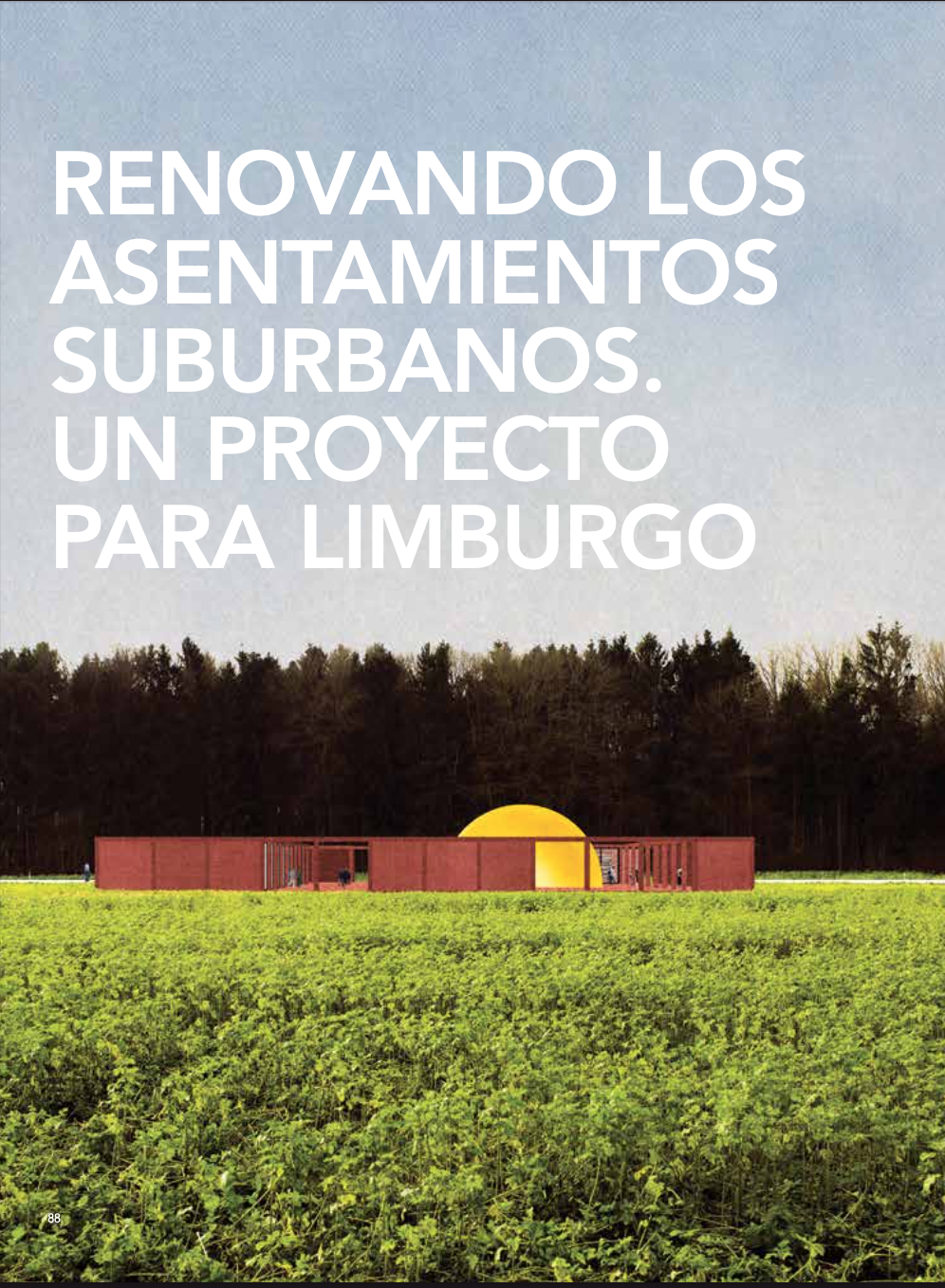RENOVANDO LOS ASENTAMIENTOS SUBURBANOS. UN PROYECTO PARA LIMBURGO
Barra lateral del artículo

Palabras clave:
Contenido principal del artículo
Resumen
La ducha popular es un instrumento que, en el siglo XIX, se aplica como tratamiento médico frente a los comportamientos anormales, ejerciéndose en un laboratorio en busca de resultados. Al considerarse demasiado coercitiva, esta práctica pasa a utilizarse como calmante de los estados eufóricos o epilépticos, y después como método disuasorio contra la locura. A principios del siglo XX se analizan estadísticamente los efectos de la ducha en un espacio pedagógico, pasando a definirse como un gabinete de hidroterapia donde se desplazan fluidos de razón y de emoción dentro y a través del cuerpo.
Detalles del artículo
Materia Arquitectura proporciona acceso inmediato y gratuito a todos los contenidos de esta edición electrónica, publicada simultáneamente con la edición impresa. Materia Arquitectura no cobra honorarios a los autores por ningún concepto.
Todos los contenidos de esta edición electrónica se distribuyen bajo licencia Creative Commons de “Atribución-Copartirigual 4.0 Internacional” (CC-BY-SA).
La licencia Creative Commons permite el acceso libre e inmediato al contenido y permite que cualquier usuario lea, descargue, copie, distribuya, imprima, busque o genere enlaces a los textos completos de los artículos, permitiendo también que estos puedan ser rastreados para indexarlos, pasarlos como datos a software o usarlos para cualquier otro propósito legal. Asimismo, la licencia otorga derechos de uso a quienes a su vez utilicen una licencia abierta (Creative Commons o equivalente).
Los derechos de los textos y las imágenes publicadas pertenecen a sus autores, quienes otorgan a Materia Arquitectura la licencia para su uso. La gestión de los permisos y la autorización de publicación de las imágenes (o de cualquier material) que contenga derechos de autor y sus consecuentes derechos de reproducción en esta publicación es de exclusiva responsabilidad de los autores de los artículos.
Toda vez que mencionen su origen, los autores son libres de distribuir sus artículos por otros medios. Cualquier reproducción total o parcial del material deberá citar su procedencia.
Descargas
Citas
BOURNEVILLE, Désiré-Magloire. (1886). Recherches sur l’épilepsie, l’hystérie et l’idiotie. París: Delahaye-Lecrosnier.
BOURNEVILLE, Désiré-Magloire. (1891). Recueil de mémoires, notes et observations sur l’idiotie. París: Progrès Médical-Lecrosnier.
CHARCOT, Jean-Martin. (1889) Archives de neurologie, revue des malades nerveuses et mentales. París: Progrès Médical.
CHARCOT, Jean-Martin. (1892). Leçons du mardi à la Salpêtrière. París: Progrès Médical-Babé.
COMMISSION des Hospices de Paris. (1823). Rapport fait au conseil général des hospices civils de Paris dans la séance du 13 novembre 1822. París: Huzard.
CROMMELINCK, Constant. (1842). Rapport sur les hospices d’aliénés de l’Angleterre, de la France et de l’Allemagne. Cortrique: Jaspin.
DUVAL, Émile. Traité pratique et clinique d’hydrothérapie. París: Baillère, 1888.
EARLE, Pliny. (1841). A visit to thirteen asylums for the insane in Europe; to which are added a brief notice of similar institutions in transatlantic countries and in the United States. Philadelphia: Dobson.
FOUCAULT, Michel. (1995). Les machines à guérir: aux origines de l’hôpital moderne. París: Mardaga.
FOUCAULT, Michel. (1984). Histoire de la sexualité III. Le souci de soi. Paris: Gallimard.
FOUCAULT, Michel. (2007). Los anormales. Curso en el Collège de France (1947-1975). Buenos Aires: SEE.
GUISLAIN, Joseph. (1826). Traité sur l’aliénation mentale et sur les hospice des aliénés. Amsterdam: Van der Hey et Fils.
HEQUET, Charles. (1852). Notice biographique sur la vie et les travaux du docteur Leuret. Nancy: Grimblot.
RICHARD, Émile. (1889). Histoire de l’hôpital de Bicêtre; une des maisons de l’hôpital général de Paris. París: Steinheil.